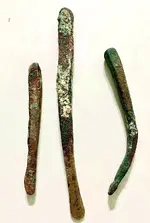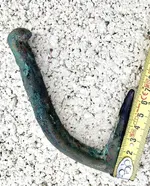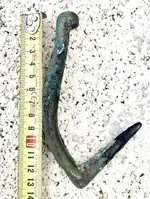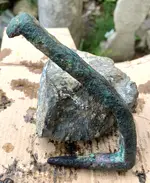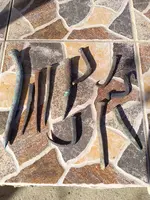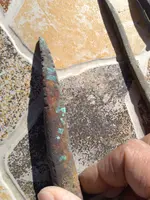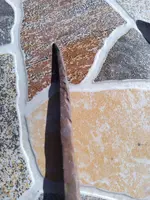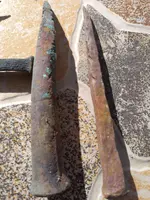Pichifliguen
Jr. Member
- #1
Thread Owner
Hi guys.. I’m a new member of this site but I have been enjoying the knowledge, amazing stories and personal finds for a while as a guest.
I found few artifacts while scuba diving that they seem to be spikes and/or nails made out of brass, bronze or copper. To be honest I don’t know much about metals. The large spike has some ridges close to the point as you can see in the picture.
It will be great to have an idea of how old these may be, usage or any other information that you guys may want to share.
The measurements are in cm.
Thank you!







I found few artifacts while scuba diving that they seem to be spikes and/or nails made out of brass, bronze or copper. To be honest I don’t know much about metals. The large spike has some ridges close to the point as you can see in the picture.
It will be great to have an idea of how old these may be, usage or any other information that you guys may want to share.
The measurements are in cm.
Thank you!



